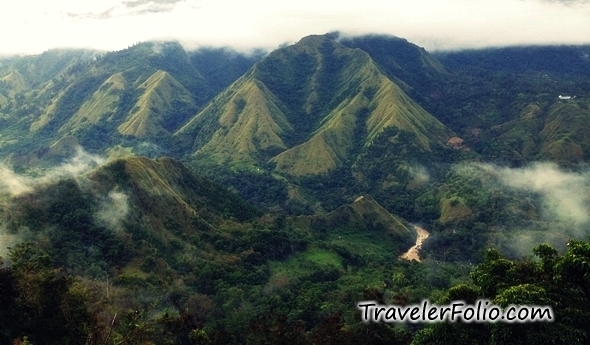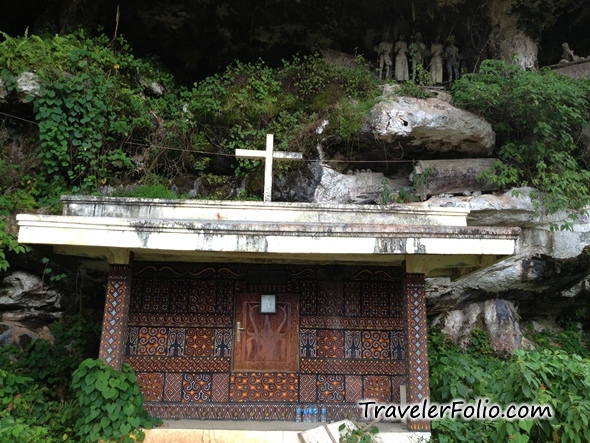Makassar is the bustling capital of South Sulawesi, one of Indonesia’s fastest growing cities. Also known as Ujung Pandang, Makassar consists of various ethnic groups including Bugis, Mandar, Chinese, Javanese, Buton and Toraja, offering a multitude of historic gems, cultural experience and sightseeing opportunities. It is the gateway to the nearby pristine islands and natural attractions outside the city.
It was Tana Toraja that drew me back to Makassar for the third time. We travelled to Rantepao, the cultural centre of the Torajans, some 300-kilometre northeast of Makassar in South Sulawesi. About 700-metre above sea level, the highland has cool climate and of course, fresh mountain air.

The road trip from Makassar to Tana Toraja is a whopping 8-hour journey into the mountainous region. On the way, we stopped by a restaurant for coffee break and were overwhelmed by the postcard-esque view of Buntu Kabobong mountain. It is dubbed as the erotic mountain because the slopes and valley resemble the female part! (Hint: focus at the centre of the photo below.)

Funeral ceremonies to the Toraja people are essentially important as they believe that death is the transition to life in another world- the heaven. A large number of buffaloes and pigs are sacrificed according to social ranking and they ‘serve’ as the transportation for the soul to heaven. Also great feasts to the villagers.
We had the privilege to visit a few grave sites of the Torajans. Each grave site is the resting place of one or more members of the same family generation after generation.
Lemo
This grave site resembles the shape of a pomelo, that explains its namesake, ‘lemo’. The two structures on the right are used to carry coffins.

It takes one to two years to carve a hole out of the rock cliff and the deceased is placed in a coffin and buried into the hole. Here you can see lifelike effigies called ‘Tau Tau’. They were created to look like the deceased, standing at the balconies guarding the grave sites and watching over the surviving families and friends.

Other grave sites built like houses.

The tourist attraction has a row of souvenir and craft shops selling Torajan costume, musical instrument, artworks and so on.


A skilful craftsman at work. Some of the wooden effigies look so lifelike, they send chills down my spine.

Smaller wooden effigies.

Would you pose beside her to take a photo? Some did. It spooks me.

An old vendor playing a musical instrument.

Tongkonan
Tongkonan is the traditional family house of the Toraja people, built on stilts and crowned with a saddle roof that resembles a boat. The architectural style is derived from the Torajan belief that their ancestors descended from heaven in a boat. Another version says that the ancestors came from China on a boat some twenty generations ago.
Buffalo horns are hung in a row vertically and signify the wealth of the family.

Exteriors of a tongkonan are decorated by carved patterns on coloured wood.

Buffalo jaws hanging outside the house.

The small saddle roof buildings are rice barns arranged in a row, each facing a tongkonan. The lower platform of the rice barn serves as an area to host the guests. Rice barns symbolize the family’s wealth.

Tongkonan

Kambira Village
Our guide says that it is the only baby graves in a tree in the south of Tana Toraja. Only babies without milk teeth were buried in standing position inside the tree so that they could ‘grew up’ with it. This kind of tree has white sap that looks like milk for baby.

Ke’te’ Kesu’
One of the most popular tourist attractions in Tana Toraja, here you can find rows of fascinating tongkonan houses with beautiful carvings on the exteriors and rice barns set against the megalith stones and paddy fields.

Walk in further to visit the grave site on a cliff with hanging coffins, some on the ground. These coffins could be as old as 800-year. The Torajans believe that coffin is the transportation to heaven. If the coffin is shaped like a ship, it’s made for both male and female. In modern days, common Toraja people use flat top coffin whereas those in the higher social rank use round top coffin.

According to the guide, some of the hanging coffins could have fallen from the cliff.

Hanging coffins.

Bori
This grave site seems different from the rest that we have seen. There are many monumental stones around the graves. Each stone was placed by the noble family of the deceased, in addition to a minimum of 24 buffaloes sacrificed for the burial ritual.


I thought it was someone inside but the effigy of the doctor who was buried here.

We stayed at Marante Hotel which is near to another grave site at Marante Village. Do you see a row of effigies here?


Londa
Of all the grave sites we visited in Tana Toraja, the most intriguing one has to be Londa. Very ‘intense’. Piles of coffins are placed on the crack flanks on the wall of a hill. Skulls are displayed prominently at the entrance of the cave tomb which has been around for hundreds of years ago, even earlier than the coffins buried in the holes of cliffs and rocks.

Skulls placed on the rock next to the coffins.

Hanging coffins.

Life-like effigies overlooking the balcony. They look so real.


Be careful with slippery ground in the cave as you enter. It isn’t big inside but many were enthralled to see the grave site of two lovers who had passed on hundreds of years ago. The guide relates their love affair to Romeo and Juliet.

There are many other coffins laying around the cave tomb as well. I was careful not to bump into them. While walking out of the cave, I was glad I didn’t, by any chance, touch the skulls that are placed at the entrance!

The other cave tomb nearby. This cave has a lot of skulls and coffins laying around.

Lucky there were a few people in this small cave tomb, else I won’t dare to enter.

We only had two short days in Tana Toraja, missing out the elaborate funeral ceremonies that are seen as occasions for celebration. They are usually held on weekdays and you can join a scheduled tour to experience the mind-boggling ritual which lasts for days.

Special thanks to SilkAir for the invitation to visit Makassar and Tana Toraja. The full service airline operates flights to Makassar three times weekly on Tuesdays, Thursdays and Saturday. Explore and plan your holiday getaway on SilkAir and check out the fare deals. (www.silkair.com)

You know what? This is my homeland of my mom! I’ve yet to visit this place but u had! Gosh! 🙁
@CleverMunkey: surprised! tell me more! does the dead buffalo really jump after ‘chanting’ or what? how about the dead?